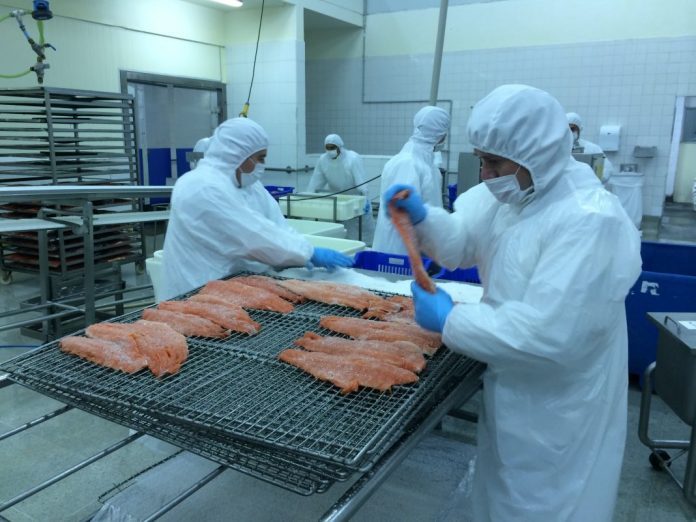Pre-Christmas trading at prices far below break-even costs.
Last week Mowi presented its third-quarter results. In its presentation material, it was stated that the company is operating at a price of fresh fillets at USD 3.4 dollars per pound delivered Miami. Taking into account a fillet yield (for D-trim) of 60 per-cent, converted into kilograms, a dollar in air freight, this means a USD 4.3 salmon price delivered from Santiago.
This is in line with the price level European salmon farmers were trading at the current week, as SalmonBusiness reported on Friday.
Far below break-even costs
But it is no secret that Chilean frozen salmon, especially towards markets in Asia and Russia, is sold at significantly lower prices.
“The last five containers I paid for, three are in the sea and two are to be shipped to Singapore at USD 3.7 and USD 3.9 dollars. This is premium at USD 5-6. If you take away freezing and shipping costs, about NOK 7 (USD 0.7 .ed), you end up with about NOK 27.5 (USD 3 .ed) for the fish,” said an importer based in South-East Asia to SalmonBusiness.
With production costs around USD 4.2 per kilo, the sale prices are miles below break-even costs.
“But this is not special. These are the prices we have to fight against in the market,” said the experienced importer who did not want his name in print.
Same prices
The importer, who also runs his own processing company, previously bought five tonnes of airborne fresh salmon a week. Now, most of it goes in freezing containers by sea.
“We sold approximately 2.5 containers of salmon products weekly, before the coronavirus. From Norway, it takes nine weeks, from Chile on 12 May. We had thus more than 30 containers in the sea when the market overnight was closed. We rented a freezer warehouse that took about 40 containers,” he said, adding: “It’s been tough, but we’re surviving”.
“Europe will also soon get fish from Chile at the same prices,” he predicted.
“The prices are only temporary. It will work out,” he said. “The real problem I envisage is the deteriorating quality of the fish. We cut several tonnes for the day in both Norwegian and Chilean fish. Norwegian is degraded. I mean it comes harvested from a wellboat. Fish are in vessels with ice water, the boat returns to the processing facility, and the guts are not taken out of the fish until the next day. The death stiffness has been in the fish. The result is a softer quality that is easy to crack when cutting the fillet. For portions it’s ok, but not to fillet,” he added.

